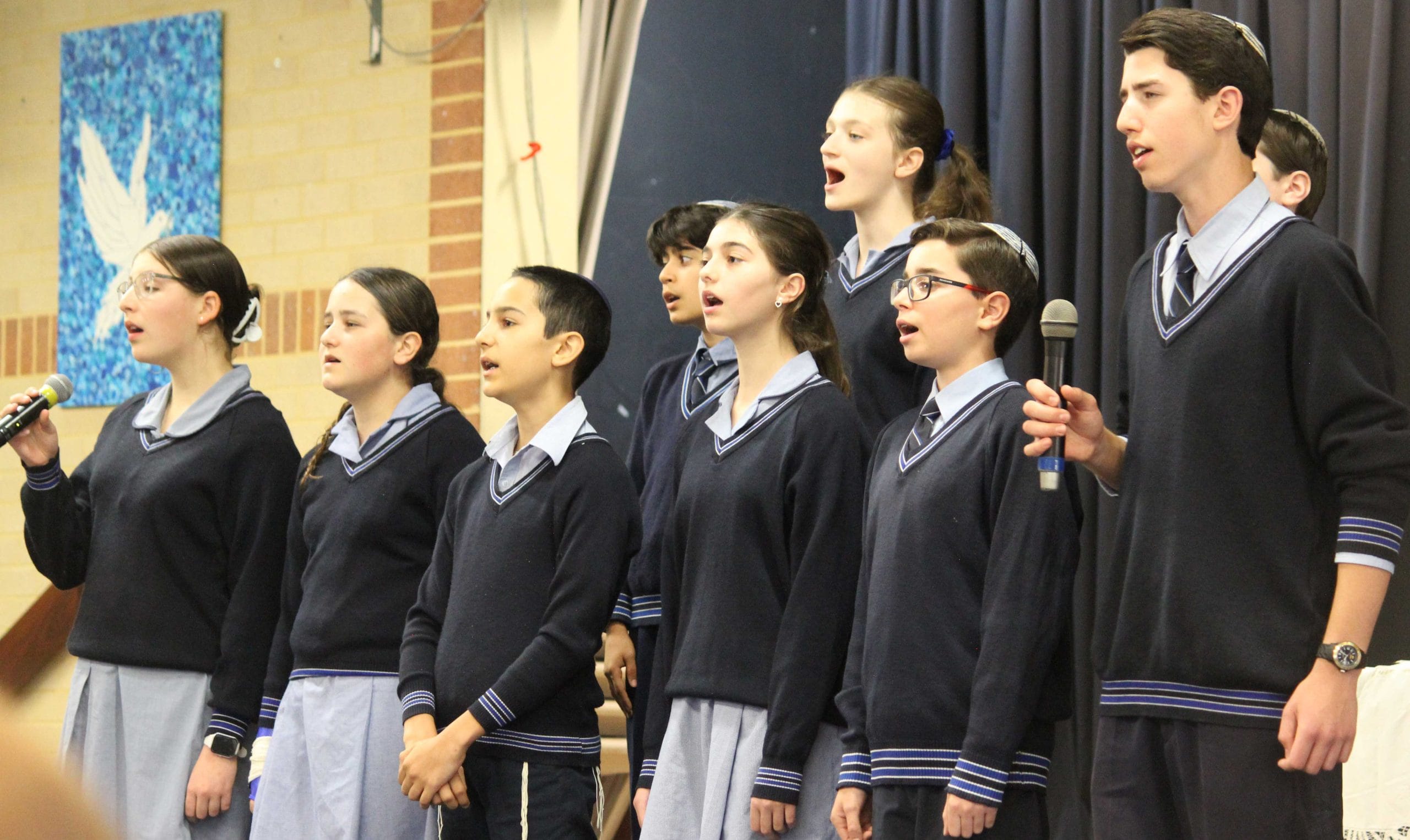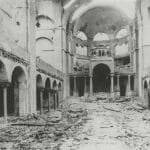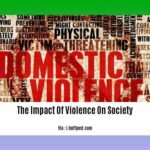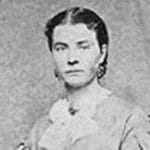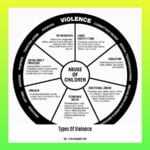Eighty-five years ago today, a shocking event shook the world. Kristallnacht, or “Night of Broken Glass,” was a night of terror for Jewish communities across Germany and Austria. Synagogues were burned, businesses were ransacked, and violence erupted. It was a grim reminder of the dangers of unchecked hatred and intolerance. Today, as we remember the victims of Kristallnacht, we must also recognize that antisemitism still exists. We must fight against all forms of hatred and work towards a more just and peaceful world.
Remembering Kristallnacht: 85 Years Later
This year marks 85 years since Kristallnacht, a horrifying event that targeted Jewish people and businesses across Germany and Austria in 1938. This coordinated pogrom, instigated by the Nazi Party and SS, marked a terrifying escalation of the Nazi regime’s persecution of Jews, ultimately culminating in the Holocaust. Remembering Kristallnacht isn’t just about looking back; it’s about understanding the lasting impact of hatred and how it can still manifest today.
Sadly, antisemitism hasn’t disappeared. We see it in the disturbing rise of hateful language and even violence directed at Jewish communities around the world. It’s a chilling echo of the past, reminding us that the prejudice that fueled Kristallnacht is still a threat.
This year, Germany marked the anniversary with a powerful message. Chancellor Olaf Scholz spoke out forcefully against the growing tide of antisemitism, emphasizing how crucial it is to protect our democracies from extremist beliefs. The anniversary also sparked important conversations about fighting hate and building a more inclusive world. It’s about going beyond remembrance and taking real action.
The Unbroken Thread of Antisemitism
The shattered glass from Kristallnacht continues to remind us about the insidious nature of hatred and how quickly it can escalate into violence. It’s been 85 years, and sadly, the same hate that fueled that horrific event hasn’t disappeared. It’s like a disease that never truly went away, instead changing and adapting over time to take on new forms while still carrying the echoes of the past.
What’s truly heartbreaking is how antisemitism, a specific type of prejudice targeting Jewish people, still casts a shadow on our world today. We see it in the hateful graffiti sprayed on synagogues, hear it in the slurs whispered behind people’s backs, and witness it in the fear that many Jewish communities feel just by existing.
The lessons we should have learned from Kristallnacht are as relevant now as they were then. We can’t just sit back and hope things get better. We need to actively fight against antisemitism, call it out whenever and wherever we see it, and educate ourselves and each other about its dangers.
Despite facing unimaginable horrors, the Jewish community has shown incredible resilience and strength. Their spirit, unbroken and defiant, shines as a beacon of hope, reminding us that even in the face of immense darkness, the human spirit can prevail. Their story, one of survival and perseverance, reminds us that we have the power to create a better, more tolerant world. Let’s honor their resilience by continuing the fight against all forms of hatred.
Germany Confronts its Past
Eighty-five years have passed since Kristallnacht, and Germany finds itself caught between remembering a dark chapter and grappling with the unsettling reality that hate, particularly antisemitism, hasn’t vanished. This anniversary isn’t just a history lesson; it’s a time for serious reflection on where the country stands today and how it can prevent history from repeating itself.
Germany isn’t shying away from its past. Instead of sweeping Kristallnacht under the rug, the country is holding commemorations to remember the victims. These events aren’t just about looking back, though. They’re also about shining a light on the ways antisemitism is showing its face in today’s world.
Chancellor Olaf Scholz has made it crystal clear: Germany won’t tolerate hate. He’s strongly condemned the recent surge in antisemitic incidents, showing that the country is serious about confronting the uncomfortable truths of its history and stopping them from happening again.
The Roots of Kristallnacht: Unpacking the Historical Context
Kristallnacht didn’t erupt from a vacuum. Sadly, the foundation for this night of terror had been built over centuries of ingrained prejudice and wild conspiracy theories about Jewish people. The Nazis didn’t invent this hatred, but they knew how to exploit it. Their propaganda machine was like a megaphone, amplifying these hateful ideas and turning them into a national sickness.
Imagine being stripped of your rights, piece by piece. That’s what the Nuremberg Laws of 1935 did to Jewish people in Germany. These laws essentially said Jewish people were no longer real citizens. They couldn’t marry who they wanted, couldn’t work where they wanted, and their lives were systematically dismantled.
Of course, this didn’t happen overnight. Before the horrors of Kristallnacht, there were smaller acts of hate – threats, attacks, and boycotts designed to make Jewish people feel unwelcome and unsafe. Then came the Herschel Grynszpan incident in 1938. Grynszpan, a Jewish refugee, shot a German diplomat. While this act was born out of desperation and fear, it gave the Nazis the excuse they’d been waiting for. Joseph Goebbels, the Nazi Minister of Propaganda, was a master manipulator. He used this event to whip the public into a frenzy, and that frenzy erupted into Kristallnacht.
The night of November 9-10, 1938, will forever be stained by the violence that unfolded. Mobs, fueled by hate, attacked homes, shops, and synagogues, leaving a trail of broken glass and shattered lives in their wake. It’s estimated that over 7,500 Jewish businesses were destroyed, 1,400 synagogues were burned, and around 30,000 Jewish men were arrested and sent to concentration camps.
The Scars of Kristallnacht: Survivor Testimonies & the Ripple Effect of Trauma
Eighty-five years have passed since Kristallnacht, yet its shockwaves still ripple through time. It’s a chilling reminder of how deeply antisemitism can cut and the lasting trauma it inflicts. This wasn’t just a night of broken glass; it was a night of broken lives, the echoes of which still resonate today.
Imagine listening to the stories of those who lived through Kristallnacht. You’d hear about the terror in their voices as they describe the shattering of glass, the flames engulfing synagogues, the sheer devastation that seemed to swallow everything familiar. Their physical wounds might have healed, but the emotional and psychological scars lingered, invisible but ever-present.
And it wasn’t just the survivors who carried this burden. The trauma of Kristallnacht seeped into the lives of their children and grandchildren. Studies suggest that descendants of Holocaust survivors are more likely to experience anxiety and emotional distress, a testament to how deeply trauma can embed itself in families.
The aftermath of Kristallnacht saw Jewish families torn from their homes, their businesses looted, their lives upended. This displacement shattered livelihoods, severed community ties, and left many feeling lost and adrift in a world that seemingly didn’t want them.
“Never Again” in 2023: How Does Kristallnacht’s 85th Anniversary Resonate?
Eighty-five years have passed since that terrible night of violence against Jewish communities in Germany—Kristallnacht. You’d think we would have learned by now, wouldn’t you? But the sad truth is, as the world feels increasingly unstable and people seem more and more divided, the echoes of that hate still whisper to us.
Kristallnacht wasn’t just some random acts of vandalism. This was organized, systematic violence, encouraged by those in power. It wasn’t just about broken windows, though; it was about broken lives and a broken society. It was a terrifying preview of the horrors to come during the Holocaust.
It’s easy to say “Never Again,” to believe that humanity has moved past such barbarity. Yet, here we are in 2023, and antisemitism isn’t a relic of the past; it’s a present threat. We see it in online spaces, filled with hateful comments and conspiracy theories. We see it in the news, with attacks on Jewish individuals and institutions. It’s a stark reminder that words have power, and hateful rhetoric can easily escalate into violence.
Germany’s Response to Modern Antisemitism: Is It Enough?
Chancellor Scholz has openly condemned recent antisemitic incidents in Germany, showing the country knows it has a problem. Remembering what happened is undeniably important, but some people argue that actually dealing with the root causes of these issues is just as critical. Germany faces a new wave of antisemitism, with echoes of the hate-filled speech that was common before World War II. This is deeply troubling for Holocaust survivors who are experiencing a resurgence of fear. Experts warn that these warning signs should not be ignored. The recent conflict between Israel and Hamas has only made things worse, sparking even more antisemitic incidents across the globe.
So, how effective has Germany’s response actually been? Well, there are some challenges. Regulating hate speech online is incredibly difficult, and there are concerns that Holocaust education in schools isn’t comprehensive enough. Furthermore, the Jewish community is feeling increasingly unsafe and has expressed concerns about their protection.
Lessons from Kristallnacht: The Fight for a More Tolerant Future
The events of Kristallnacht weren’t just a tragedy; they were a wake-up call about how quickly hatred can spiral out of control. Today, as we see intolerance and prejudice bubbling up again, it’s more important than ever to understand what Kristallnacht can teach us about fighting hate in our own time.
One of the biggest takeaways is the importance of recognizing warning signs early on. Kristallnacht didn’t come out of nowhere. It was the culmination of years of slowly chipping away at people’s rights and spreading hateful messages about Jewish people. Today, we need to be on the lookout for similar patterns: hate speech, discrimination, and blaming entire groups for problems are all red flags that shouldn’t be ignored.
Another crucial lesson is understanding how misinformation and propaganda can be used to twist people’s views. The Nazi regime used these tactics masterfully, painting Jewish communities as dangerous outsiders, which created an environment where violence felt justified to many. In our digital age, it’s even easier for false information to spread like wildfire on social media and the internet. We all have a responsibility to be critical thinkers, question what we see online, and teach others how to spot fake news.
But recognizing the problem isn’t enough. During Kristallnacht, many people witnessed the horrors unfolding but chose to stay silent. Today, we cannot afford to be bystanders. We must be upstanders who speak out against hate whenever and wherever we see it, whether it’s online or in our own communities. Silence only allows prejudice to fester and grow bolder.
The Legacy of Kristallnacht: Understanding its Enduring Significance
Kristallnacht, also known as the “Night of Broken Glass,” wasn’t just a night of violence; it was a terrifying glimpse into the darkness that was to come. Throughout history, Jewish communities have, sadly, often faced prejudice and violence, but this event in 1938 felt different. This wasn’t just a few angry individuals; this was organized, state-sanctioned terror against an entire group of people, simply for who they were.
Even more unsettling is that the hatred that fueled Kristallnacht hasn’t magically disappeared. In a world increasingly connected by the internet, antisemitic ideas and conspiracy theories spread like wildfire. It’s a stark reminder that the fight against prejudice requires constant vigilance. We can’t afford to be bystanders. When we see hate speech online, we need to challenge it. When we hear harmful stereotypes, we need to speak up. Silence only emboldens those who spread hate.
Kristallnacht & the Israel-Hamas War: Examining the Connection
The recent conflict between Israel and Hamas has, unfortunately, ignited a wave of anti-Jewish feelings around the world, bringing back haunting memories of Kristallnacht. It’s like the world is witnessing a scary echo of the past, with hatred and prejudice rearing their ugly heads once again.
The internet, in particular, has become a breeding ground for hateful content. False information, dangerous conspiracy theories, and outright lies about Jewish people are spreading like wildfire on social media and online forums. This online hate isn’t staying confined to the digital world, though. It’s spilling out into the real world, contributing to a disturbing rise in antisemitic incidents globally. We’re seeing more and more cases of vandalism, harassment, and even violence directed at Jewish people and their places of worship.
This upsetting trend is a stark reminder that the same poisonous ideas that fueled Kristallnacht – blaming an entire group of people for the actions of a few, spreading unfounded rumors, and resorting to hate instead of understanding – are still very much alive today. It’s a wake-up call that we can’t afford to ignore.
Education: A Weapon Against Intolerance
Kristallnacht, a night of terror that shook the world, stands as a chilling reminder of the horrors that antisemitism can unleash. This wave of violence, which swept across Germany and Austria on November 9-10, 1938, wasn’t just about shattered glass and destroyed buildings; it represented the shattering of Jewish lives and the dangerous escalation of hate.
The events of Kristallnacht force us to confront a sobering truth: intolerance, left unchecked, can spiral into unimaginable acts of brutality. This is where education steps in as a powerful force for change. By equipping future generations with the knowledge and understanding they need, we can combat the prejudice and discrimination that fueled events like Kristallnacht.
One of the most effective ways education can counter intolerance is by fostering critical thinking skills in students. This means teaching them to question the information they encounter, identify potential biases, and form their own well-informed opinions based on evidence.
Equally important is how we teach about the Holocaust. It’s not enough to present a dry account of historical facts; we need to make it real, relatable, and emotionally impactful. By sharing the personal stories of individuals who experienced the Holocaust firsthand, we humanize the victims and help students grasp the devastating consequences of hatred and intolerance on a deeply personal level.
Taking Action: Upholding “Never Again”
Eighty-five years have passed since Kristallnacht, yet the fight against antisemitism remains as pressing as ever. Remembering this horrific event isn’t enough; we need to actively resist hatred in all its forms. It’s a stark reminder that hatred, left unchecked, festers and explodes into violence. Upholding the promise of “Never Again” demands constant vigilance and action from all of us.
The lessons learned from Kristallnacht run deep. We’ve seen how easily prejudice can spiral into violence, and we can’t afford to be complacent. What happened then wasn’t an isolated incident; it was the culmination of unchecked hatred.
Sadly, antisemitism didn’t disappear after the Holocaust; it evolved. It lurks in the shadows, sometimes disguised as criticism of Israel or hidden behind hateful memes online. But make no mistake, it’s still a very real threat today.
The responsibility to fight this hatred falls on all of us. We can’t rely solely on education and remembrance; those are vital, but we need to go further. We must be vocal, challenging antisemitic rhetoric, jokes, and stereotypes whenever we encounter them. Silence only allows hatred to grow stronger.
Beyond Remembrance: Kristallnacht 2023
Eighty-five years have passed since Kristallnacht, yet its darkness still lingers. It’s not enough to simply remember what happened. This anniversary forces us to confront the fact that antisemitism is not a relic of the past; it’s a very real problem we still grapple with today.
Kristallnacht wasn’t just a random act of violence; it was a planned and coordinated attack on Jewish people, their businesses, their synagogues, their homes – their very existence. The trauma of that night echoes through generations, a stark reminder of how easily hate can spiral into devastating violence.
What’s even more concerning is that antisemitism hasn’t gone away. It might take different forms, sometimes hiding behind seemingly harmless words or online anonymity, and other times exploding into acts of physical violence. The events of Kristallnacht serve as a chilling example of just how dangerous this prejudice can be if left unchecked.
Lessons from the Past: Kristallnacht’s Enduring Impact
Kristallnacht, also known as the “Night of Broken Glass,” wasn’t just a dark moment in history; it was a turning point. The violence that erupted in Germany in 1938, targeting Jewish businesses, synagogues, and individuals, serves as a chilling reminder of how fragile peace can be and how quickly hate can spiral out of control. The shattered glass, the burning buildings, the fear etched on people’s faces—these images continue to haunt us, urging us to learn from the past.
One of the most disturbing aspects of Kristallnacht is how many people simply stood by, silent and inactive, as the violence unfolded. This silence spoke volumes. It showed the Nazis that the world wasn’t paying close enough attention, that maybe they could get away with even more. It proved that indifference could be just as dangerous as hatred itself. This is a critical lesson for us today: when we see injustice, prejudice, or discrimination, we can’t stay quiet. Silence only empowers those who wish to do harm.
Kristallnacht’s Enduring Legacy and the Urgent Fight Against Modern Antisemitism
Eighty-five years have passed since the horrifying events of Kristallnacht, yet the world is witnessing a deeply troubling rise in antisemitism. It’s a harsh wake-up call, reminding us that hatred continues to be a threat and that we need to come together to fight it.
The Shadow of Kristallnacht
“The Night of Broken Glass,” as Kristallnacht is often called, was a state-sanctioned pogrom that swept across Nazi Germany and Austria on November 9-10, 1938. This wasn’t just about breaking windows; it was a planned attack on Jewish life and spirit. Synagogues, places of worship and community, were destroyed. Jewish-owned businesses, the livelihoods of families, were vandalized and looted. Homes, places of safety and refuge, were invaded. Hundreds of innocent people were killed, and thousands more were injured, leaving behind physical and emotional scars that would never truly heal. This terrifying event was a turning point. It showed the world how far hatred could go and marked a terrifying acceleration towards the horrors of the Holocaust.
What Was Kristallnacht? A Defining Moment in History
The events of Kristallnacht, which translates to “Night of Broken Glass,” weren’t just about shattered windows; they reflected a terrifying escalation of hatred towards Jewish people in Nazi Germany and Austria. On November 9th and 10th, 1938, the Nazi Party, along with their paramilitary group, the Sturmabteilung (SA), unleashed a wave of violence that forever changed the course of history. This wasn’t just random violence, it was orchestrated, planned, and encouraged by those in power.
Imagine this: Nazi propaganda, spearheaded by Joseph Goebbels, had been slowly poisoning minds for years, painting Jewish people as the enemy. This constant barrage of lies and hatred created an atmosphere where violence felt almost inevitable. And then, Kristallnacht happened.
Kristallnacht’s Relevance in 2023
The events of Kristallnacht, which happened on November 9-10, 1938, were absolutely terrifying. Imagine this: Jewish businesses, homes, and places of worship were attacked in a wave of violence across Nazi Germany and Austria. This wasn’t just random violence; it was planned and encouraged by the Nazi regime, revealing the horrifying reality of the deep-seated anti-Jewish sentiment that had been brewing for years. Even though it’s been 85 years, the impact of Kristallnacht is still felt today. It serves as a chilling reminder of how unchecked hatred and prejudice can spiral into unimaginable horrors. The world needs to remember this event, not just as a historical fact, but as a stark warning about what can happen when hate is allowed to flourish.
The Global Rise of Antisemitism: Statistics
We’ve been discussing some really concerning trends, and unfortunately, the situation only seems to be getting worse. In 2023 alone, there’s been a huge jump in antisemitic incidents – a whopping 235% increase. This isn’t just a number on a page; it reflects real fear and anxiety for Jewish people all over the world.
While there’s never a single reason why something like this happens, the recent Hamas attack on Israel has definitely fueled the fire. It’s estimated that almost half – about 45% – of the recent antisemitic incidents are directly related to the conflict. But it’s also important to understand that this goes deeper than any one event. The ADL, an organization that tracks antisemitism around the world, has an index showing that these prejudices are sadly ingrained in many societies.
Trends & Analysis: Combating Antisemitism in 2023
The anniversary of Kristallnacht always makes us think about that terrible night in 1938 when Jewish businesses and homes were attacked in Nazi Germany. It serves as a stark reminder that hate and prejudice, if left unchecked, can have horrific consequences. We’re reminded that the shattered glass of that night wasn’t just about physical destruction – it represented a breakdown of human rights and the terrible power of unchecked hatred.
Sadly, antisemitism didn’t disappear after the Holocaust. It’s still a problem today, although it often hides behind different masks. Sometimes it’s very direct, like when someone physically attacks a Jewish person or vandalizes a synagogue. Other times, it’s more subtle. Think about hate speech disguised as jokes, discrimination in jobs or housing, or wild conspiracy theories that target Jewish people. Sadly, social media has become a breeding ground for this kind of hate, allowing it to spread faster and wider than ever before.
From Remembrance to Action: Concrete Steps to Combat Antisemitism Today
Eighty-five years have passed since Kristallnacht, yet the chilling echoes of antisemitism still haunt us. It’s a stark reminder that simply remembering this horrible event isn’t enough. We need to turn our remembrance into action.
Think about this: unchecked hatred against Jewish people led to the horrors of Kristallnacht, which then paved the way for the Holocaust. It’s a terrifying example of what can happen when prejudice is allowed to fester.
And here’s the scary part: antisemitism hasn’t gone away. It’s still around us in different forms, from hateful words to actual violence. This means we have a responsibility to fight it wherever we see it.
Kristallnacht: A Stark Reminder of the Perils of Intolerance
The events of Kristallnacht weren’t just about broken glass; they were about shattered lives and broken spirits. This wasn’t simply an isolated event. It was a chilling escalation of the Nazi regime’s systematic persecution of Jewish people, a terrifying glimpse into the depths of hatred and violence that were to come. It serves as a stark reminder of what can happen when intolerance festers and hate is allowed to flourish.
Sadly, the lessons of Kristallnacht are incredibly relevant today. Antisemitism, in all its insidious forms, continues to cast a shadow over our world. From subtle biases to outright discrimination, from online hate speech to physical attacks on individuals and communities, this ancient hatred refuses to die.
Unpacking the Events of Kristallnacht: A Timeline of Terror
On November 9th and 10th, 1938, a wave of violence against Jews, orchestrated by the Nazi regime, swept across Germany and Austria. This wasn’t just random violence; it was planned and encouraged by the Nazi Party and their thugs, the SA. This event, which we now call Kristallnacht or the “Night of Broken Glass,” was a turning point, showing the world just how far the Nazis were willing to go in their persecution of Jews.
Imagine this: mobs, fuelled by hate-filled propaganda that painted Jews as the enemy, roamed the streets, destroying everything in their path. Jewish-owned businesses, their windows smashed and livelihoods shattered, synagogues set ablaze – places of worship turned to ash – and homes invaded, leaving families terrified and vulnerable. This wasn’t just about destruction; it was about creating a climate of fear so intense that Jews wouldn’t dare feel safe in their own homes.
The Long Shadow of Kristallnacht: How the Past Informs the Present
Kristallnacht showed the world how hate, when left unchecked, can explode into something truly horrifying. This wasn’t just about breaking windows; it was about breaking spirits, shattering communities, and sending a terrifying message about who belonged and who didn’t in Nazi Germany.
But here’s the thing about hate – it doesn’t just disappear. It might fade into the background, but it’s always lurking, waiting for the right conditions to resurface. And sadly, in many ways, it feels like those conditions are back. We’re seeing a rise in antisemitism around the world. It’s in the hateful graffiti on synagogues, the slurs thrown around online, and the fear that many Jewish people feel just walking down the street.
Confronting Antisemitism in the 21st Century
Sadly, even now, antisemitism continues to show itself in different ways, from nasty comments online to actual violence and even people denying the Holocaust ever happened. It’s a scary reminder that this hate still exists and can hurt people and communities. Think back to Kristallnacht, that awful night when Nazis attacked Jewish people and their property – it shows just how bad things can get if we don’t stop this kind of hate.
One important way to fight back is through education. When we teach people about the Holocaust, especially young people, it helps them understand the terrible consequences of letting hate grow. Hearing stories from people who lived through that time is super powerful; it reminds us that history could repeat itself if we don’t stand up against bigotry.
Building a Future Free from Hate: The Power of Education
The 85th anniversary of Kristallnacht, a tragic event in 1938, serves as a stark reminder of the devastating consequences of unchecked hatred. Even though the horrors of the Holocaust are a painful part of our history, antisemitism unfortunately still exists today, manifesting in different ways. From hate speech spreading online to physical attacks and even denial of the Holocaust, antisemitism continues to plague our society.
To effectively combat this insidious form of hate, we must prioritize education. Programs that teach about the Holocaust, especially those that share the firsthand accounts of survivors, play a crucial role. They help us understand the enormity of the atrocities committed and the dangers of allowing intolerance to take root.
Empathy & Action
The echoes of Kristallnacht still resonate today, a stark and chilling reminder of the devastation caused by antisemitism. Sadly, this hatred hasn’t vanished. It lurks in different forms, from hateful words and violent acts to the outright denial of the Holocaust’s horrific reality. This is why empathy and action are more vital now than ever.
Fighting this prejudice requires a two-pronged approach: education and legal safeguards. Education is key—it’s how we nurture tolerance, understanding, and awareness of history. At the same time, we need stronger laws to punish hate crimes and hold social media platforms accountable for the content they allow.
Remembering Kristallnacht in a World on the Brink
The echoes of shattered glass still haunt us, a chilling reminder of the horrors inflicted upon Jewish communities on that fateful night. Kristallnacht, the “Night of Broken Glass,” wasn’t just about broken windows; it was about broken lives, broken spirits, and a world teetering on the brink of unimaginable darkness.
It’s easy to think of this event as a relic of the past, a chilling history lesson that has little relevance today. But the sad truth is, the hatred that fueled Kristallnacht hasn’t disappeared. It might wear different masks and speak in coded language, but antisemitism is still a very real threat in our world.
Exploring the Causes and Consequences of Kristallnacht
Kristallnacht wasn’t some isolated event. It was the terrifying culmination of years of growing hatred and prejudice against Jewish people in Germany. But what were the specific factors that led to such a horrific outburst of violence? And what happened in the aftermath?
One major cause was the deeply ingrained antisemitism that had plagued Europe for centuries. This prejudice, baked into the culture and history of the region, created fertile ground for the Nazi party’s hateful ideology to take root.
Echoes of Kristallnacht: Identifying Modern Instances of Intolerance
Sadly, even after all these years, the hate and intolerance that fueled Kristallnacht haven’t disappeared. They’ve just taken on new forms in our modern world. Let’s look at some unsettling parallels to understand how this ugly history is repeating itself.
Echoes of the Past in Modern Intolerance
Kristallnacht wasn’t just a terrible event; it was a symptom of a much deeper sickness in society. That sickness, fueled by antisemitism and intolerance, is something we’re still grappling with today. Here’s how:
Hate Speech Spreads Online: The internet, for all its good, has become a breeding ground for hate speech. Antisemitic slurs, conspiracy theories, and calls for violence against Jews are disturbingly easy to find on various online platforms. This digital hate mongering fuels real-world prejudice and can have terrifying consequences.
Attacks on Synagogues Continue: Just like during Kristallnacht, synagogues, places of worship and community for Jewish people, are still being targeted. We’ve seen a rise in vandalism, arson, and even deadly shootings at synagogues in recent years, leaving Jewish communities feeling vulnerable and afraid.
Holocaust Denial and Distortion: The Holocaust was a horrific attempt to exterminate an entire people, and denying its reality is deeply offensive and dangerous. Yet, some individuals and groups try to downplay the Holocaust’s severity, spread misinformation about it, or even outright deny it happened. This not only disrespects the memory of millions of victims but also creates fertile ground for antisemitism to grow.
The Importance of Holocaust Education
We’ve already talked about how crucial it is to remember and learn from the Holocaust, and events like Kristallnacht really drive that point home. Eighty-five years ago, this horrific night, which translates to “Night of Broken Glass,” saw the destruction of Jewish businesses, homes, and places of worship all across Nazi Germany. It was a terrifying escalation of hatred and violence, and it left a permanent mark on history, a stark reminder of what prejudice can lead to.
So how do we fight against something so awful? Education is a powerful tool. It’s like a shield against ignorance and hatred. Here’s how:
Building Empathy: When we hear the stories of survivors, when we listen to their experiences, the victims of the Holocaust become real people in our hearts and minds. It’s not just history anymore; it’s a human connection that bridges the past and the present.
Facing Down Lies: Sadly, there are those who try to twist or even erase the truth about the Holocaust. Education, armed with accurate historical accounts, helps us fight those lies. We can’t let anyone get away with minimizing or denying the suffering that took place.
Stopping it from Happening Again: By understanding how antisemitism took root and grew, students can learn to spot the warning signs in the world today. They gain the tools to challenge prejudice and discrimination wherever they see it.
Combating Denial: Reckoning with Kristallnacht’s Shadow
We’ve talked about the horrors of Kristallnacht and the Holocaust, but the fight doesn’t stop there. We have to remember that antisemitism didn’t begin or end with that terrible night. It’s a deeply rooted prejudice that has reared its ugly head throughout history. And sadly, it still exists today.
Towards a More Inclusive Future: Fostering Dialogue
The echoes of Kristallnacht still reverberate today, serving as a chilling reminder of what happens when hate is allowed to fester. Sadly, antisemitism hasn’t disappeared; it’s morphed and adapted to the times. Today, it might look like hateful messages spreading like wildfire on social media, attempts to erase the Holocaust from history, or even physical violence targeting Jewish communities. These are not isolated incidents; they are clear signs that we need to be actively working towards a more inclusive future.
Challenging Prejudice: Kristallnacht’s Enduring Lesson
Eighty-five years ago, a terrifying event unfolded that shook the Jewish community to its core. This event, known as Kristallnacht or the “Night of Broken Glass,” witnessed widespread violence and destruction targeting Jewish homes, businesses, and synagogues across Germany and Austria. Orchestrated by the Nazi regime, Kristallnacht stands as a chilling reminder of the devastating consequences of unchecked hatred and prejudice.
Kristallnacht’s Enduring Legacy and Championing Human Rights
Kristallnacht, also known as the “Night of Broken Glass,” wasn’t just a dark moment in history; it was a terrifying example of what can happen when hate is allowed to fester. This horrific event, which took place on November 9, 1938, saw widespread violence against Jewish communities across Nazi Germany. Synagogues were set ablaze, businesses were destroyed, homes were vandalized, and innocent people were terrorized, all fueled by the dangerous ideology of antisemitism.
Learn more about the life and work of Marion Braidfute, a remarkable artist known for her distinctive style and visionary approach. Also, explore the significance of Macon’s Bill No. 2, a controversial piece of legislation that sparked heated debates and legal challenges.
- Unlocking 2-Letter Words with U: The Definitive Guide - April 4, 2025
- Unlock Words with the Letters THREE: Top Unscramble Tools 2025 - April 4, 2025
- Master Scrabble: X & Z Words for High Scores - April 4, 2025
